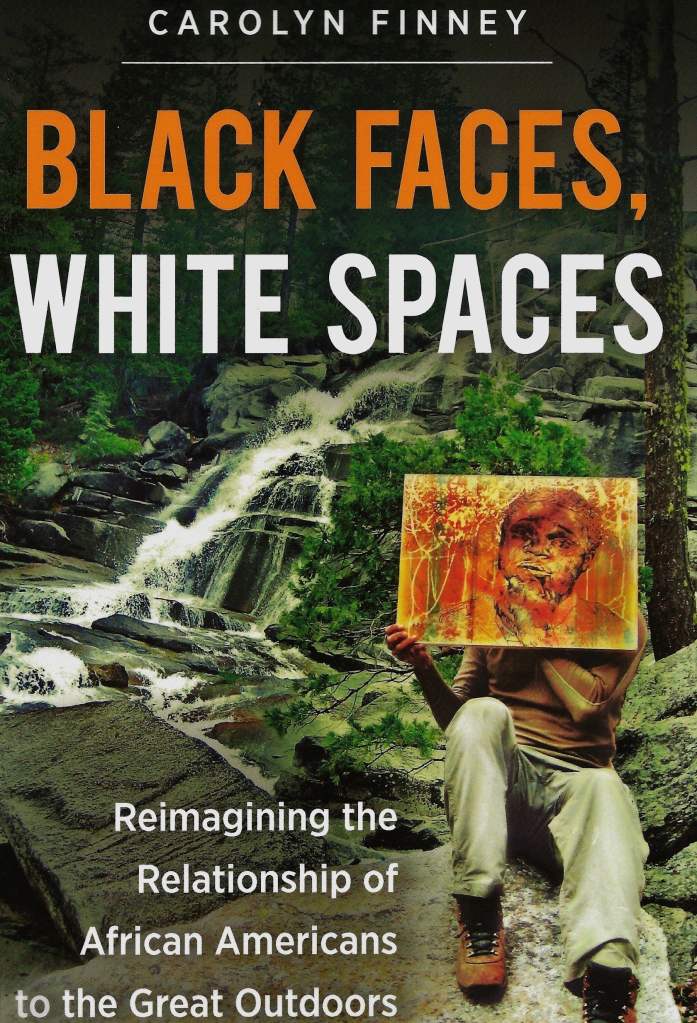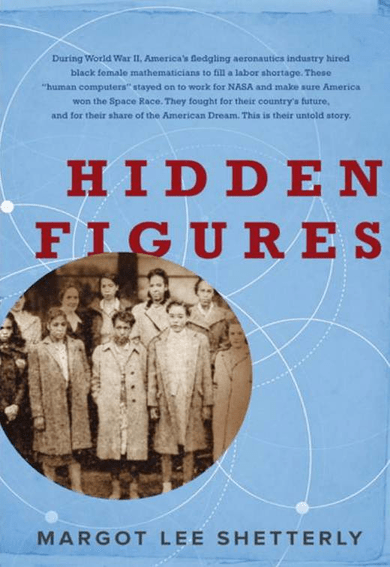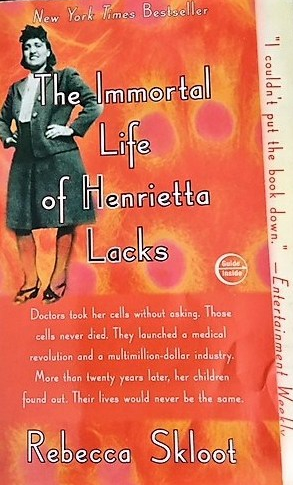Recently, I chanced upon an Atlas Obscura article discussing lördagsgodis, the Swedish tradition of indulging in candy on Saturdays. What drew my attention, however, was that title mentioned “human experimentation”. As it happens, lördagsgodis’s roots can be traced to experiments performed on mentally ill patients during the mid- to late 1940s that established sugar’s role in cavity formation. The study, which neither benefited its patients (quite the opposite) nor obtained their consent, was not unique to Sweden.[*] In fact, its ethical issues suggested those raised in The Immortal Life of Henrietta Lacks, the tale of an African-American woman whose cells, collected without her permission in 1951, led to profound scientific discoveries. Given how deeply this nonfictional account delves into medical ethics, politics, racism, and scientific discovery as they intertwine with the lives of Henrietta Lacks and her family, I will focus on the more poignant moments that exemplify these issues.
History, Ethics, and Human Experimentation
As author Rebecca Skloot observes, patients of US public wards often were unaware that they served as research subjects, something some researchers considered to be an acceptable trade for receiving treatment (29–30). Such patients, particularly impoverished, poorly educated African-American patients living in the pre—Civil Rights era in the United States were unlikely to ask questions: the presumption that physicians “knew best” coupled with widespread racism alone prevented such a thing (Skloot 63). And before the advent of Institutional Review Boards in 1966 (Sparks 2017),[†] research involving human participants did not receive much formal oversight (Skloot 131, 136). What happened to Henrietta Lacks, specifically taking her cancer cells without her knowledge or consent, was both the norm however unpalatable we might find it.
For Henrietta, there were more personal consequences related to the treatment that permitted her cells to be collected. Johns Hopkins, the hospital where Henrietta was treated, standardly informed women of childbearing years that hysterectomy led to infertility—one of the rare instances where patients did receive adequate information from physicians in this book. And yet this did not happen in Henrietta’s case. Her records revealed that she would have refused treatment had she known (Skloot 47–8). And although she would not have lived long enough to bear another child (Skloot 86), the choice should have been hers. The tissue sample collected from this hysterectomy, however, continued to grow long past its expected life: the discovery of an immortal line of human cells had been found (Skloot 40–1).
 Amazing Discoveries and Uncomfortable Juxtapositions
Amazing Discoveries and Uncomfortable Juxtapositions
The importance of Henrietta’s cells (called HeLa) to scientific research is vast. For example, HeLa played a large role in proving that Salk’s polio vaccine worked—and it was African-American scientists and technicians who produced the massive quantities of HeLa cells needed to do so (Skloot 93–7). Yet this achievement also represents one of the most painful juxtapositions in The Immortal Life: the HeLa factory was located at The Tuskegee Institute, a place better known for its infamous syphilis study involving African-American men.[‡] The terrible disparity between HeLa’s role in saving the lives of so many people—regardless of their racial background—and the unnecessary deaths of African-American people is more shocking when you consider that twelve of the Tuskegee study participant’s children still receive benefits (CDC 2017).
Disclosure and Family Distress
Not long after Henrietta was identified as the HeLa “donor” in the early 1970s, the Lacks family discovered that her cells were still alive, a revelation they did not understand and found alarming (Skloot 173, 175–81). Further interactions with researchers did little to improve their understanding. When researchers obtained blood samples from Henrietta’s family to establish genetic markers for HeLa, the Lacks family thought they were being tested for cancer (Skloot 180–4). More alarmingly, the resulting study published Henrietta’s name with her genetic information (Skloot 197–8). And more medical information was revealed about Henrietta without consulting the Lacks family. In the 1980s, her medical records were published, something which caused immense grief for Henrietta’s daughter, as Deborah read intimate details about her mother’s diagnosis and the anguish she suffered before her death (Skloot 209–10). Other family members, however, were angered by the profits made by biomedical companies while their family remained impoverished and could not afford health insurance (Skloot 168, 193).
Thoughtfulness and Modern Ethics
And this is perhaps the most concerning theme that The Immortal Life of Henrietta Lacks reveals: thoughtlessness. Mary Kubicek was an assistant who was sent to collect tissue samples during Henrietta’s autopsy in 1951. Unaccustomed to dealing with dead bodies, she focused her gaze away from Henrietta’s eyes. Then, she noticed Henrietta’s painted toenails and realized that Henrietta was an actual person, not just a collection of cells. It was something she had not considered before. It’s astonishing how many researchers (most but not all of whom were white) echoed this refrain and never thought about whether patients and/or their families might have concerns, even after ethical standards were changed. And this best represents what was most needed here, for researchers to think of Henrietta Lacks as a human with rights instead of as HeLa’s source. To think of all patients involved in research as people first.
* * *
Originally, I intended to end where the book does, with the emphasis on the need to see patients as people instead of mere study subjects. Instead, I discovered something of an unpleasant (if unsurprising) postscript: the Lacks family again needed to protest the public distribution of information about Henrietta. In 2013, the European Molecular Biology Laboratory published the genome of a line of HeLa cells to an online database that allowed public downloads of this data. Although no laws were broken (Callaway 2013), it seems the researchers did not consider the ethical implications of making genetic data publicly available that could be potentially reveal private information about Henrietta’s family (Skloot 2013). The database subsequently was removed and the National Institutes of Health, who also planned to publish a similar paper, established a review board (that includes two of Henrietta’s family members) to determine who will gain access to this genetic information in the future (Zimmer 2013). While this hopefully will provide Henrietta’s family with much needed closure on this topic, questions remain about how geneticists should handle such sensitive data for other patients.
What response did you have to Henrietta’s story? Share it below in the comment section. Also, sign up for the Sequence’s newsletter and keep current with the latest posts.
NOTES:
[*] Elsie Lacks, Henrietta’s daughter, resided at a facility for mentally ill patients where medical experiments were carried out on the African-American patients living there, again without consent. She likely was a study subject. She died in 1955 (Skloot 274–6).
[†] HeLa also played a role in the formation of these boards. The discovery that researcher Chester Southam had been injecting HeLa cells into patients (roughly half of whom were diagnosed with cancer) without disclosure and consent caused a scandal that prompted the National Institutes of Health to create these boards (Skloot 127–36).
[‡] This study’s notoriety primarily stems from (but is not limited to) the fact that researchers purposefully withheld treatment from patients afflicted with syphilis long after a cure was developed in 1947. Ultimately, most patients died terribly, with many having infected both wives and children (Skloot 50, “Tuskegee Syphilis Study” 2017, CDC 2017).
Works Cited
Callaway, Ewen. “HeLa Publication Brews Bioethical Storm.” Nature (2013): n. pag. http://www.nature.com/news/hela-publication-brews-bioethical-storm-1.12689.
Centers for Disease Control and Prevention. Centers for Disease Control and Prevention, 08 Dec. 2016. Web. 25 Feb. 2017. https://www.cdc.gov/tuskegee/timeline.htm.
“Tuskegee syphilis experiment.” Wikipedia. Wikimedia Foundation, 20 Feb. 2017. Web. 25 Feb. 2017. https://en.wikipedia.org/wiki/Tuskegee_syphilis_experiment.
Glasser, Hana. “An Adorable Swedish Tradition Has Its Roots in Human Experimentation.” Atlas Obscura. N.p., 04 Jan. 2017. Web. 25 Feb. 2017. http://www.atlasobscura.com/articles/an-adorable-swedish-tradition-has-its-roots-in-human-experimentation.
Skloot, Rebecca. The Immortal Life of Henrietta Lacks. New York: Broadway Paperbacks, 2011.
Skloot, Rebecca. “The Immortal Life of Henrietta Lacks, the Sequel.” The New York Times. The New York Times, 23 Mar. 2013. Web. 26 Feb. 2017. http://www.nytimes.com/2013/03/24/opinion/sunday/the-immortal-life-of-henrietta-lacks-the-sequel.html?_r=0.
Sparks, Joel. Timeline of Laws Related to the Protection of Human Subjects. National Institutes of Health, U.S. Department of Health and Human Services, n.d. Web. 25 Feb. 2017. https://history.nih.gov/about/timelines_laws_human.html.
Zimmer, Carl. Zimmer, Carl. “A Family Consents to a Medical Gift, 62 Years Later.” The New York Times. The New York Times, 07 Aug. 2013. Web. 26 Feb. 2017. http://www.nytimes.com/2013/08/08/science/after-decades-of-research-henrietta-lacks-family-is-asked-for-consent.html.










 Amazing Discoveries and Uncomfortable Juxtapositions
Amazing Discoveries and Uncomfortable Juxtapositions